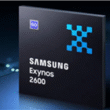Samsung Unveils Groundbreaking LPDDR6 Memory: A Leap Towards Superior Performance
Summary:
- Samsung’s first LPDDR6 memory boasts speeds up to 10.7Gbps, marking a significant evolution in mobile technology.
- Enhanced energy efficiency of 20% over LPDDR5X promises longer battery life for future smartphones.
- Though anticipated for this year’s flagship devices, LPDDR6 memory is now expected to debut next year amid rising prices due to a memory market cycle.
On October 18, technology reports highlighted that the latest generation of Android flagships is adopting high-speed LPDDR5X memory, signaling an impending shift toward the LPDDR6 era anticipated for next year. This new memory standard is projected to achieve impressive speeds, reaching 10Gbps, with Samsung leading the charge in development.
Samsung has announced that its first LPDDR6 memory will feature a remarkable pin speed of 10.7Gbps and a bandwidth of 114.1GB/s. This performance rivals traditional PC-level memory speeds, elevating mobile devices to new dimensions of functionality and efficiency.
For context, LPDDR5 memory initiates at 6400Mbps, while its enhanced variant, LPDDR5X, escalates to 8533Mbps. SK Hynix has entered the fray with its LPDDR5T, demonstrating speeds up to 9600Mbps. Clearly, Samsung’s LPDDR6 memory is not merely a technological enhancement, but a game-changer in the industry.
The confirmation from Samsung comes on the heels of the LPDDR6 standard announcement by JEDEC in July. While the initial standard lacked specific speed stipulations, future expectations suggest that memory frequencies could soar to 14.4Gbps, indicating vast potential for performance improvements.
Another notable advancement in Samsung’s LPDDR6 memory lies in its energy efficiency. It’s reported to deliver an impressive 20% increase in energy efficiency compared to LPDDR5X, a critical factor that enhances the longevity of mobile device batteries. This improvement will significantly address one of the main concerns users face with high-performance smartphones: the balance between power and endurance.
However, despite early speculation that LPDDR6 memory might appear in the next generation of Snapdragon and Dimensity flagship phones, it appears that launch plans may have been delayed, potentially pushing the release to next year. This postponement aligns with broader market trends, notably the upcoming memory industry’s super cycle, which occurs roughly every seven years. As a result, prices are expected to rise significantly upon the launch of LPDDR6, making it more costly than its predecessor.
Industry analysts predict that a standard mobile device featuring 12GB of LPDDR6 memory might see starting prices around 5,999, reflecting the anticipated increased costs due to both memory and 2nm processor advancements expected next year.
With the impending transition to LPDDR6, users can look forward to smartphones that not only perform better but also last longer. This evolution in memory technology heralds a new chapter, where faster speeds and improved energy efficiency become standard, setting a new benchmark for mobile computing.
As the tech industry gears up for this transformation, those planning to upgrade should keep an eye on market trends to get the best value amidst evolving technologies and price fluctuations. The LPDDR6 memory is poised to lay the groundwork for the future of mobile technology, potentially reshaping how we use smartphones in our daily lives.








